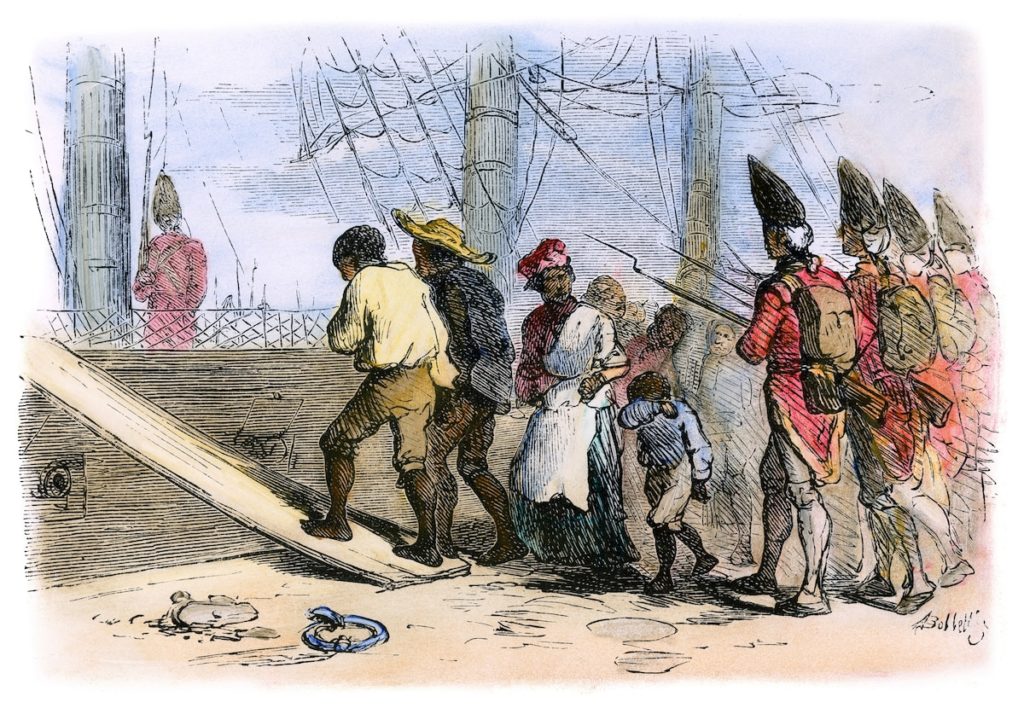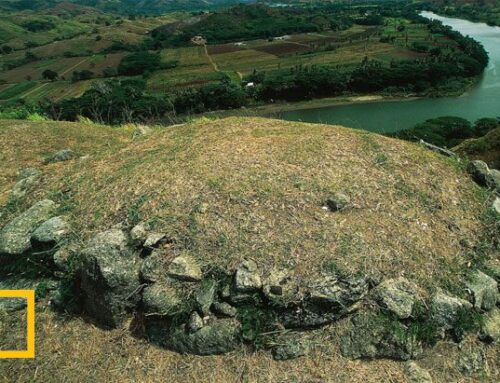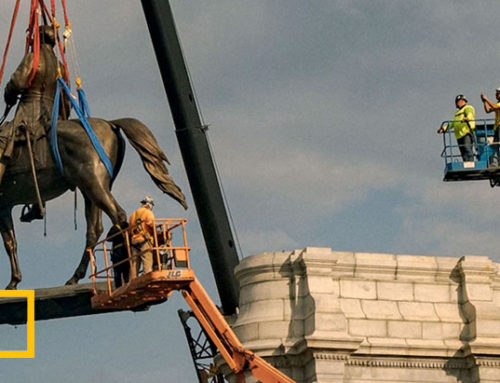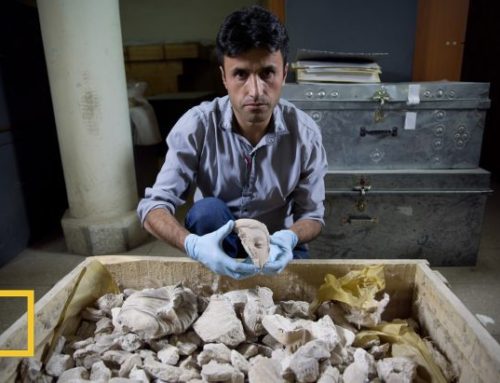A British royal governor, not Abraham Lincoln, was the first person to offer enslaved Americans freedom—in return for battling revolutionaries.

Enslaved Africans fled from the plantations of patriot planters during the American Revolution under protection of the British.
In 1775, Americans responded to the call for liberty, taking up arms against their oppressors and fighting the first major battles of the Revolution south of New York. Hundreds of these soldiers, however, were Black men fighting for, rather than against, King George III.
Reportedly wearing sashes that declared “Liberty for Slaves,” members of the “Ethiopian Regiment“—Ethiopian being a synonym for Black—charged into combat against their former masters, determined to win their freedom. They were drawn to the cause by the continent’s first emancipation proclamation, a document predating President Abraham Lincoln’s famous edict by nearly a century.
African Americans arrived on Virginia’s shores in 1619, only a dozen years after the first white settlers. By the onset of the Revolution, Virginia was the largest and most prosperous of the 13 colonies, and Blacks accounted for nearly one in two of its half million inhabitants. The vast majority were consigned to working in the tobacco fields that produced much of Virginia’s wealth—and which supported the planter class that included George Washington, Thomas Jefferson, and other revolutionary leaders.
These leaders’ nemesis was John Murray, the Scottish earl of Dunmore and the king’s royal governor in Virginia. In April 1775, with rebel fighters battling British troops in Massachusetts, Lord Dunmore plotted to arm Indigenous peoples and Blacks to counter the growing insurgency in his colony. Rumors of his plan alarmed whites, who lived in constant fear of slave insurrections. (These tintype images evoke the complicated history of Black military service.)
At first, Dunmore backed off the idea, turning away a group of enslaved Africans who arrived at the governor’s palace in Williamsburg eager to support the king and escape bondage. By June, however, the governor and his family had fled Williamsburg for the safety of British warships anchored off Norfolk.
Seeking both freedom and protection, enslaved and free African Americans flocked to the port city on the southern end of the Chesapeake Bay. The British quickly put them into service conducting nightly raids on plantations to seize food and supplies. This, in turn, inspired other enslaved persons to run, row, or sail for freedom. Norfolk, the Virginia Gazette warned, was “full of slaves, ready for an insurrection at the beck of their leader”—that is, Dunmore.
On November 14, the governor sent British troops and a small number of Black soldiers to secure a river crossing called Kemp’s Landing. In the skirmish that followed, the British and their Black allies routed a force of several hundred rebels.
Emboldened by this strategic victory, Dunmore entered the village of Kemp’s Landing and had a proclamation read granting freedom to all of Virginia’s indentured servants and enslaved blacks “that are willing and able to bear arms” and calling them to join “his Majesty’s troops, as soon as may be.” Enslaved Blacks flocked to the king’s standard, though those owned by loyalists were sent back to their masters. (See nine unusual and iconic artifacts from the Revolutionary War.)
Soon the newly created Ethiopian Regiment was made up of some 200 men. Each was issued a weapon but was given little military training.
The regiment’s first and only engagement occurred on December 9 at the Battle of Great Bridge, where Black soldiers made up nearly half of the British force. This time, however, the American rebels would prevail. Mowed down in a desperate frontal assault, regiment survivors and their British comrades retreated to Norfolk.
As the patriots advanced toward the city, loyalist refugees and escaped Blacks crowded aboard British ships in the harbor. On January 1, 1776, a party snuck ashore and set the city ablaze to prevent it from serving as a patriot base.
Meanwhile, word of the governor’s proclamation continued to spread, and at least a thousand enslaved Africans from across Virginia and Maryland came by foot and boat to seek his protection. The news inflamed white anger against Britain. Harvard historian Jill Lepore concludes that, more than the battles of Lexington and Concord, “it was this act, Dunmore’s offer of freedom to slaves, that tipped the scales in favor of American independence.”
Soon, typhus and smallpox spread through the crowded holds of the British ships, taking a particularly heavy toll on the Black passengers, who suffered from the cold and a lack of food and sanitation. By March more than 150 had perished. Illness, Dunmore wrote, “carried off an incredible number of our people, especially blacks.”
With patriots dominating the land, Dunmore’s fleet desperately cruised Chesapeake Bay, vainly searching for a land base. What the governor called his “floating town” of more than 100 vessels was subject to cannon fire if it veered too close to shore. Suffering on the ships grew terrible. (Discover how smallpox nearly derailed the American Revolution.)
“There was not a ship in the fleet that did not throw one, two, or more, dead overboard every night,” wrote Dunmore, a man who had once been a personal friend of Washington and was now derided by white rebels as a tyrant, while hailed as a liberator by Virginia’s slaves.
British reinforcements failed to arrive, and by August the fleet was forced to split up and sail for British strongholds in New York and Florida. Thus ended the first Black regiment on North American soil. Some of the freed slaves continued to fight for the British in New York, and many later settled in Nova Scotia.
“They endured cold and the mud, hunger, and thirst, disease and deprivation, to fight untrained against a numerically superior foe,” wrote historian Charles Carey, Jr., who studied the little-known episode. Their sacrifice, he added, proved that “death, no matter how painful, is preferable to an existence in bondage.”




